Allergy Free Alaska, LLC Copyright © 2013
When I first went gluten free, I think the most important and difficult food item for me to replicate was a loaf of really good gluten free bread. I tried many, many recipes, but with each one the texture was different, the taste was different, it wouldn’t last past a day… etc. I was beyond frustrated and tired of wasting expensive ingredients. All I wanted was a loaf of fresh bread I didn’t have to toast and would stay fresh out on the counter for at least 3 days. Is that too much to ask?
No. It’s definitely not.

I finally got so frustrated with other recipes that I decided to make my own. At first there were many failures and tears. And through it all, I am so thankful my husband never ever said one condescending word to me about wasting ingredients or that perhaps it was my (in)ability to cook which was affecting the outcome of the recipes. Nope, he held my hand and encouraged me through the whole process (thanks, babe… I love you).
It was through my husband’s encouragement and my need for delicious bread that drove me to keep experimenting. Thankfully, it all one day paid off.
My bread finally met all of my expectations. It tasted and smelled like a real loaf of bread. It was soft, had wonderful texture, wasn’t grainy, I didn’t have to eat it toasted, and it lasted out on the counter for more than a day. I don’t think the words overjoyed, elated, or incredibly happy even begin to express my emotions surrounding that one first successful loaf of bread. It was victory.
All of you deserve that kind of bread. Which is why I’ve written this- it’s my intention and desire that you are able to replicate amazing bread at home.
My favorite gluten & dairy free bread recipes (click on the link for the recipe):
Gluten & Rice Free Multigrain Bread
Gluten Free Oatmeal Millet Bread
Gluten Free Country Seed Bread
Gluten Free Hamburger Buns
Gluten Free Dinner Rolls
Gluten, Yeast & Egg Free Flat Bread
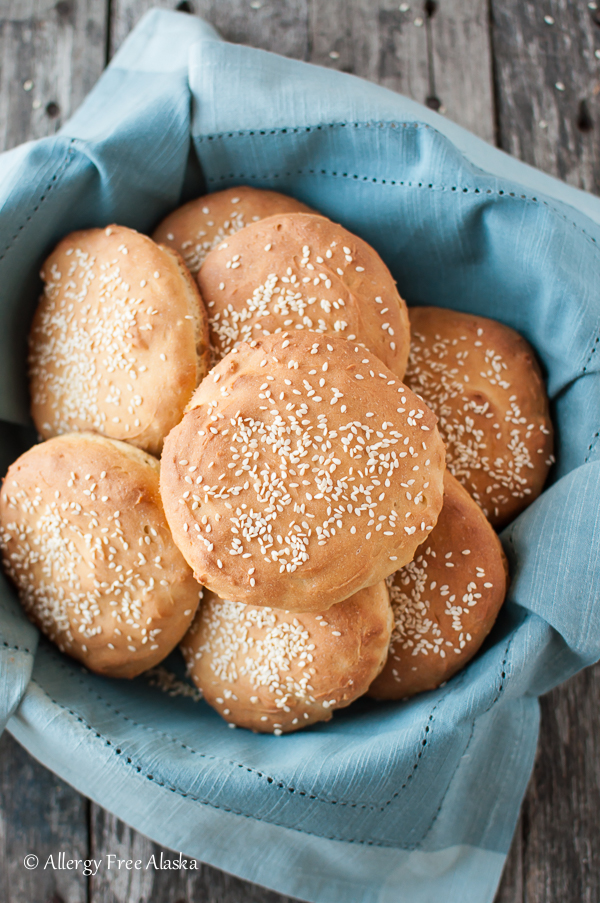
Gluten Free Bread Making 101
Make sure all ingredients are at room temperature (including the flour, eggs, yeast, nuts, seeds, etc). I let my “cold” ingredients sit out on the counter for 20 - 30 minutes before I start making bread. This ensures the bread will rise properly.
Use the mixers paddle attachment (flat beater) for the best mixing, not the bread hook. Gluten free bread requires no kneading (for the most part – there are a handful of recipes out there that do), so no bread hook is required.
Use the right yeast. I use active dry yeast in all of my bread recipes NOT instant yeast. I’ve tested many recipes using instant yeast (from loaves to rolls to flatbreads, etc), and the instant yeast has not produced the same results as the active dry yeast. I’m convinced that if you want the best gluten free bread, use active dry yeast.
Use only fresh yeast and ensure the proofing water is at the correct temperature (between 105 – 115 degrees F). The yeast should be nice and foamy when activated with honey or sugar and warm water. If the yeast isn’t foamy once the proofing time is up, either the yeast is bad or the water isn’t the right temperature. Throw it out and start again.
Not all xanthan gums are created equal. Our local store ran out of my normal Bob’s Red Mill xanthan gum and the only other brand they had available was EnerG. Suddenly my tried and true recipes were failing miserably. Breads and biscuits that were supposed to be light and fluffy ended up flat, spread out, and crumbly. Pay the extra few dollars for Bob’s Red Mill xanthan gum. It’s far superior and definitely worth it.
Use the type of bread pan the recipe calls for. Glass doesn’t always retain heat like a metal loaf pan does so if the recipe specifically calls for a specific type of pan, make sure you use that pan.
Always line your baking pan with parchment paper and then lightly grease it. This is key - especially if you don’t want your perfect loaf of bread to come out of the pan looking like a hack job. The parchment paper allows you to easily slide the loaf of bread from the pan.
Do not allow the bread dough to over rise. Over rising can cause the loaf to collapse during baking or shortly after removing it from the oven.
The bread loaf will rise a little bit more during the baking process and will appear nice and golden brown when done. To double check that the loaf is finished baking, use an instant read thermometer to check the internal temperature. A perfectly baked loaf will reach an internal temperature of 200 degrees (F).
Promptly remove the finished loaf from the bread pan and place it on a wire rack to cool. Allow the loaf to cool completely before slicing (Okay, this is really just a formality… I don’t wait for my bread to cool. I slice into it right away and eat the end piece before someone else does!). If you have trouble removing the bread loaf from the pan (even with the parchment paper), use a butter knife to carefully loosen up the sides of the bread from the edges of the pan.
The amount of liquid used (water, honey, eggs, oil), rising time, and baking time all depend on room temperature, altitude, and humidity. Make sure you read all directions and recipe notes carefully prior to beginning the bread making process to ensure success. Still getting stuck? Check out my troubleshooting section below.
Storage. I keep my bread stored in a bread bag sitting out on the counter; however, if you live in a warm climate, you may need to store your bread in a cool dark cupboard. Most of my bread recipes stay fresh for at least 3 days. If I know I won't use my loaf (or rolls, hamburger buns, etc.) up within 3 days, then I slice the remaining portion, wrap it in plastic wrap, place it in a freezer bag, and store it in the freezer. When I need a slice of bread I simply pull out a slice and place it in the toaster to toast and thaw. As for rolls or hamburger buns (that you can't quickly defrost in a toaster), I leave them out on the counter to thaw at room temperature and use them within 24 hours.
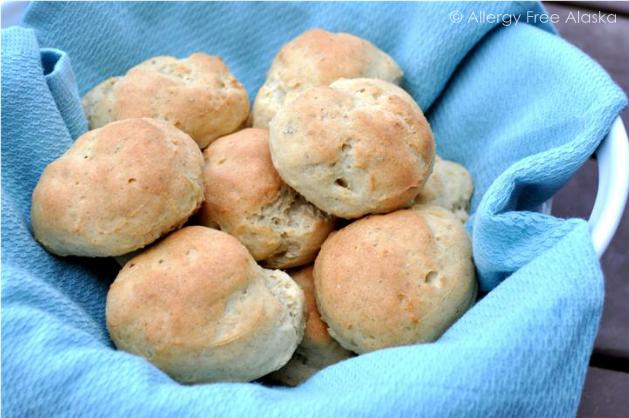
Troubleshooting
Remember, as stated previously, the amount of liquid used (water, honey, eggs, oil), rising time, and baking time all depend on room temperature, altitude, and humidity. What works perfectly for me here in Alaska year-round may not work for someone living in upstate New York in the middle of summer.
That said, in a large 9"x5” gluten and dairy free loaf of bread, there should be 2 ½ – 3 ½ cups of gluten free flour/starch, 2-3 eggs, 1-3 tablespoons of honey (if there's any honey at all), 2-4 tablespoons of oil, 2 – 2 ½ teaspoons of yeast, and 1 – 2 cups of water used. Please keep in mind, these measurements may not be completely accurate for every recipe out there, but it’s a good general estimate.
If your bread loaf continues to fail even after trying these below troubleshooting tips, I suggest trying another recipe altogether.
If the bread loaf is “sticky” or “wet” in the middle.
This means that either the bread loaf wasn’t completely finished baking and was removed too soon from the oven, or there is too much liquid in the recipe for your location (again, this is where temperature, altitude, and humidity can come into play).
To double check that the loaf is finished baking, use an instant read thermometer to check the internal temperature. A perfectly baked loaf will reach an internal temperature of 200 degrees (F).
If your loaf is slightly “sticky,” try one of the following:
- Eliminate 1 egg
- Reduce the amount of honey used to 1 tablespoon
- Reduce the amount of oil used to 2 tablespoons
If your loaf is really “sticky” and “wet” in the middle, try one of the following and also reduce the amount of water used by ¼ cup.
- Eliminate 1 egg
- Reduce the amount of honey used to 1 tablespoon
- Reduce the amount of oil used to 2 tablespoons
If the bread loaf falls after baking, but is NOT “sticky” or “wet” in the middle.
This generally means there is too much water in the recipe for your location or too much yeast is being used. Try reducing the water used by ¼ cup. Is it still falling even after reducing the total amount of water used? Try reducing the water by another ¼ cup or eliminate 1 egg.
If the bread loaf continues to fall even after reducing the amount of water used, double check your yeast. Make sure it is fresh, and that you’re using only 2 – 2 ½ teaspoons total (this applies mostly to bread loaves and rolls, but there can be exceptions to this too).
If the outside of your bread loaf burns, but the inside is gooey and not cooked through.
Double check your oven to make sure it’s properly calibrated. If you discover your oven is significantly hotter (or cooler) in temperature than it’s supposed to be, check your instruction manual to see if it gives any instructions. Or if your oven is still under warranty, you could possibly look into having a repair done. If all else fails, there are a multitude of articles online that might help depending on your oven type.
Always bake your bread loaves on the middle rack in your oven!
Other Concerns/FAQ Re: Making Gluten Free Bread
The cost. If you are constantly baking bread for a large family, you are better off buying gluten free flours in 25 pound bulk bags (either from your local health food store or online) rather than picking up small 1 pound packages of flour here and there (because those little packages sure can add up quickly).
If you don’t want to invest in several different flours, find a gluten free all-purpose flour mix you like, and use that. Most of the various flours I use in my bread recipes can be exchanged for a GF all-purpose mix.
The negative about GF all-purpose mixes. Some of them are made from mostly starch and are really unhealthy. That’s the main reason why I don’t use a mix. I prefer to mix my own flours and have control of the starch and nutritional content in a given item. Please keep in mind, I’m not trying to discourage you from buying a GF all-purpose flour mix, I’m simply saying be aware. Do your homework, read the ingredients and nutrient labels and choose wisely!
It’s grainy. Bread recipes made with bean flour and/or a high content of rice flour will generally become very grainy within a day. If there’s not enough moisture used in the bread (eggs, honey, oil, water, etc), it will easily crumble and turn icky. I prefer bread made without any bean flour, and with only a slight amount of rice flour (if any at all).
Xanthan gum is made from GMO corn. I really wish it wasn’t, but chances are it probably is. Eventually I plan on making over all of my recipes to make them entirely gum free, but that’s quite a process (I’m working on it). Until that time, I will continue to use xanthan gum begrudgingly, and sparingly.
Many of you will suggest using guar gum instead of xanthan gum. Here’s the thing, I’ve use both, and although many will say xanthan gum and guar gum are interchangeable, I’ve found them to produce different results. Guar gum significantly changes the consistency of baked goods and I don’t care for it.
Chia Seeds/Flax Seeds/Psyllium Husk. Yes, they can be used to bind gluten free baked goods together - specifically bread. However, it produces a very dense bread, which is okay, but I'm still working with it to produce a lighter product. I'm a bit of a perfectionist. 😉
Kiss the bread maker goodbye. Okay, maybe not completely goodbye, but using a bread maker to make gluten free bread is really touch and go. I had a brand new Panasonic bread maker and ended up giving it to a friend because it just wouldn’t work with gluten free bread (and believe me, I tried).
Gluten free bread is so easy to make that a bread maker really isn’t necessary. There is no kneading; there is generally no second rise, etc. Let me break it down for you: you make the dough, put it in a loaf pan, and let it rise for maybe an hour, and then you bake it. It’s super easy.
If you are really adamant that you have to have a bread maker, do some research and look for one that has a gluten free bread setting and that you know has gotten excellent reviews from other gluten free folks.
I don't have an electric stand mixer. Do I really need one to make gluten free bread? Yes. You need an electric stand mixer like a KitchenAid or something similar. Gluten free bread dough has to be whipped to get into the air into the dough and to create a perfectly smooth texture. This cannot be achieved by stirring by hand or by using an electric hand mixer.
Need Egg and/or Yeast Free? No worries, I have you covered. Click here for my Gluten, Egg & Yeast Free Flatbread recipe.
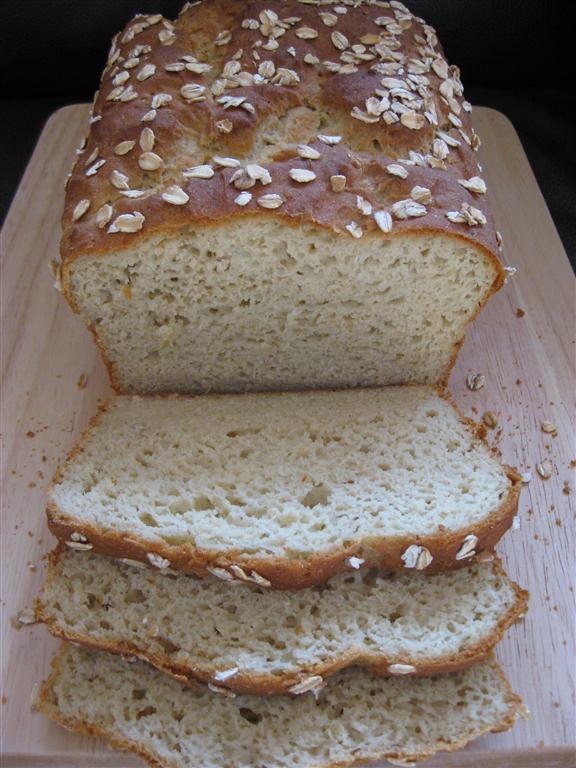
So there you have it. Was this helpful? Did you try some of my troubleshooting tips and did they help you? Do you have any questions or concerns about making gluten free bread? I would love to help you – just leave me a comment below and I will try my best to answer your questions.
All my love-
Megan

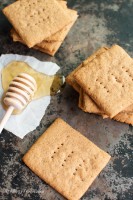
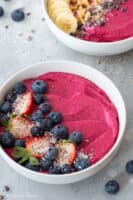
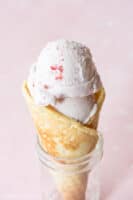
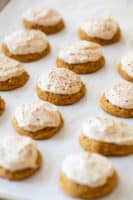
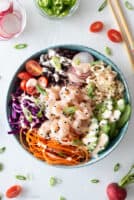
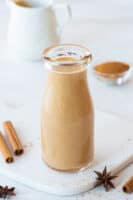
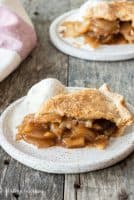
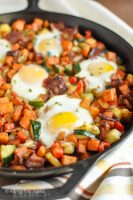
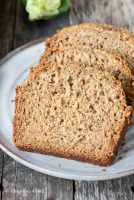
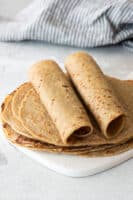
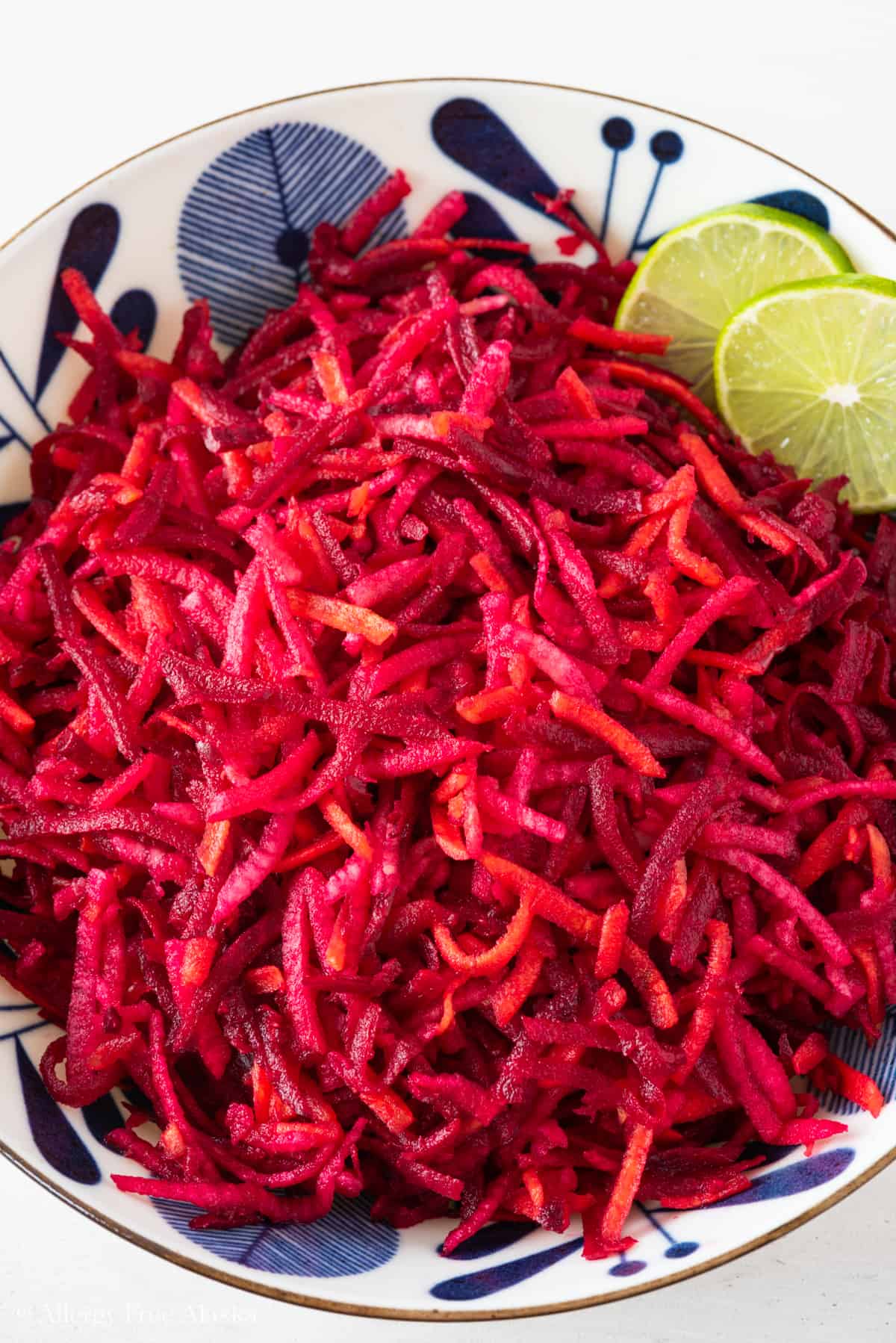
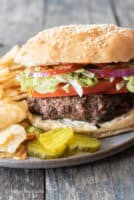
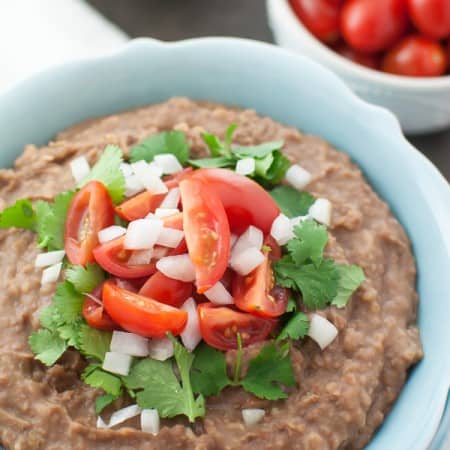
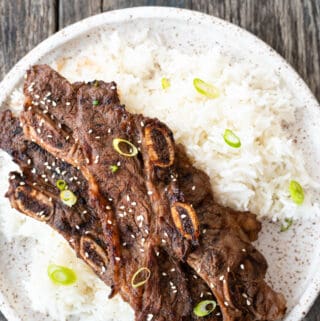
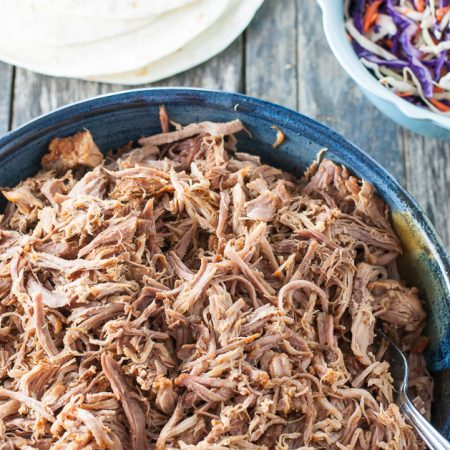
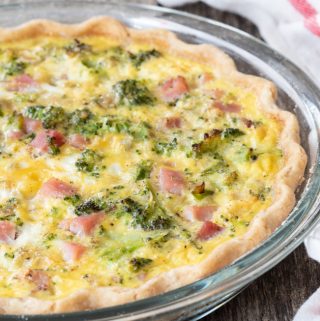
Samantha Matete says
My passion in life is creating a delicious healthy gluten free egg free bread recipe that doesn't fall to bits when you cut into it. This passion has lead me into a world of research all about the art of gluten free bread baking and its not just the ingredients that effect a successful outcome. Techniques, methods, mixing and all the rest! Psyllium does seem to be the latest in gluten free bread baking to replace gums or gluten in ‘normal’ bread baking. Gums are getting a bad rep by many people for causing gluten intolerance symptoms. Flax and chia also help along the same lines as psyllium but more so in replacing what eggs do. I’m not allergic to eggs like I am with gluten but I prefer my eggs on top of my bread rather than in it! I have tried adding this mix to the ingredients for a lighter, airy bread: 1 tbsp cornstarch, 1/8 tsp baking soda, 1/16 guar gum, 1 tsp oil, 1/4 cup water - whisked together for per 1 egg. At present I am producing a recipe, method and technique for a gluten free bread. Very exciting!!!!!
Sujata says
Hi Samantha,
Thanks for the egg replacer tip. Do you use 1/4 cup warm water or just water at room temp.?
Thanks,
Sujata
Samantha Matete says
I think I have just used room temp water but that was on a warm day so if its a cold day like it is here I would have slightly warm. Reacts more with the soda.
Megan says
Hi Samantha,
That is very exciting - thank you for sharing! And thank you for sharing your egg replacer tip too!
🙂 Megan
Hannah says
I would love some help! Have been searching to no avail for bread I can have. No gluten, potato, white or brown rice, sorghum, yeast, or almond. I can have gluten free oats, millet, buckwheat, tapioca, coconut, arrowroot, eggs, and corn. Have found a few bizarre gross recipes. Growing up, I "lived" on bread. Could even find me choosing toast over dessert.
J.Stahl says
This really is a wonderful post. Thank you for sharing it with us!
For those who have concerns about xanthan gum being corn based, there is a variety that is grown on tapioca that had been featured in Living Without Magazine a couple of years ago. We're not completely certain if it will be entirely corn free or not though, as there was some other ingredient my father can't have, and I'm now overseas so I've been unable to do further research and testing on it - - it simply is unavailable here.
You could also substitute Guar Gum in equal amounts. I do not like the aftertaste that xanthan gives me (it makes everything taste like tin) so I've only used guar gum in all of my baking since moving to Germany six years ago.
I now use a combination of guar gum, flax seed, chia seed and psyllium for my baking powder/soda based breads and that does give more rise and fluff than guar gum or xanthan ever did.
I do not however bake many things with yeast unless I know it is a tried and true recipe. The altitude, humidity and oven settings here play with recipes and I don't have time to become a kitchen chemist at the moment.
I'd noticed that Gluten Free Girl and the Chef had been playing around with chia and flax instead of the gums as of late, and I'm finding their theory interesting, though I've not made a complete turnover yet. (http://glutenfreegirl.com/2011/02/chia-seeds-and-flaxseeds/ Is where it all started, if you're interested)
Megan says
Hi J. Stahl,
Thank you for commenting! The Authentic Foods brand of xanthan gum is supposed to be corn free, but I'm not sure what it is derived from. Now you have me wondering if it is tapioca...? Interesting stuff for sure - I've never heard of xanthan being derived from tapioca. Thanks for sharing that.
I am familiar with that post from the Gluten Free Girl and have used a flax/chia/psyllium mixture as a substitution for gums; however, I've found it produces a very dense bread (so I'm still working on it). There are times when I do enjoy a slice of dense bread, but I'd rather have something "light and airy" to enjoy on a more regular basis - you know what I mean? I'm a fluffy bread kinda girl!
🙂 Megan
Renee says
Authentic has not tested its products [xanthan] to see if its indeed corn free...in fact, Im not aware of any company that has...Bobs is grown on wheat...
Megan says
Thanks, Renee. A good reminder for all of us to always, always verify allergen information!
Henry De Groot says
Hi,
You mention using a paddle for mixing. I have an old Oster mixer with beaters and two spiral hooks. When I make gluten breads with it I only use the hooks since the beaters get clogged.
What about not having the paddle attachment?
Mēgan says
Hi Henry,
When I speak of a paddle attachment, I'm mostly referring to the most popular brand of mixer - the KitchenAid. You bring up a good point though, sometimes there are other brands with other attachments I'm not aware of. Sounds like the hooks on your machine are a good choice!
michele says
Hi Megan, where can we find your recipes for bread, I have been so discouraged with finding a good bread...please help:((
Megan says
Hi Michele,
Links to my recipes are provided above (just look for the link directly underneath each picture)!
🙂 Megan
Beth says
I have an allergy to corn and wheat (gluten doesn't bother me so I can have barley, rye, etc.), so have researched xanthan gum, having heard it was made from corn. Bob's Red Mill xanthan gum is not derived from corn. It is grown on corn, but has no corn in it whatsoever. I can use it without any allergy problems. Other brands do, but not Bob's Red Mill.
Beth says
I have a question...I can't eat sorghum either and it seems to be in every bread recipe and GF flour mix. Any suggestions on substitutions?
Thanks!
Megan says
Hi Beth,
Interesting, but I'm confused. How can it be grown on corn but not have corn in it?! Needless to say, I'm very thankful you've found a brand that works for your allergies. That is a blessing!
As for the sorghum flour, you can generally substitute brown rice flour or millet flour for it. The texture might be a little different, but overall either one of those flours should work just fine.
🙂 Megan
Beth says
Megan,
Here's the reference to Bob's Red Mill statement about xanthan gum being corn free. I'll put the link to the page below the quote. It has an excellent article explaining the difference between xanthan gum and guar gum, plus a handy chart on how to use both in baking.
Thanks so much for your help. Love this site and will visit very often! Keep on experimenting.
Beth
6/11/12 UPDATE: Regarding corn in xanthan gum: The microorganism that produces xanthan gum is actually fed a glucose solution that is derived from wheat starch. Gluten is found in the protein part of the wheat kernel and no gluten is contained in the solution of glucose. Additionally, after the bacteria eats the glucose, there is no wheat to be found in the outer coating that it produces, which is what makes up xanthan gum. The short answer here is, there is no corn used at all in the making of xanthan gum.
http://blog.bobsredmill.com/gluten-free/guar-gum-vs-xanthan-gum/
Megan says
Very interesting, Beth! Thank you for sharing this!
Hugs,
Megan
Shirley @ gfe & AGFD says
Megan, this is SUCH an outstanding post! It's going to be so helpful to so many! 🙂
Shirley
Megan says
Thank you, Shirley! I hope it will be!
xo,
Megan
Christina says
THIS IS FABULOUS!!! Thanks for sharing this! I have been experimenting some more with my bread recipes (which I still need to finish adding to the site) this is quite helpful! I have made some great bread and am proud of it, but wanting to interchange some more ingredients and see what all I can create that passes my family test! LOL! I understand all your frustrations and having a hubby's encouragement to not give up (even when it gets expensive with ingredients) makes it all worth it in the end! Sweet Victory!!! I've already been referring some friends and newbies to the GF world to you and THIS will brighten them up even more! WE MUST HAVE OUR BREAD!!!
Megan says
🙂 You are so sweet! Thank you, my dear! WE MUST HAVE OUR BREAD!
Hugs,
Megan
Toxicity-2-Purity says
I am relating to your initial struggle with bread making. I get so discouraged and waste so much money with my mistakes. Part of my problem is going egg free as well. I try substituting, but don't know if I use too much water or if my yeast is not good, or if egg free is nearly impossible. Thanks for the tips! It reassures me that I could be using too much liquid, but where do I go from here? Do I add more flour if I am adding more water to the recipe with my egg replacer? have you considered creating an egg free, GF bread?
Megan says
Hi! 🙂 I actually have an egg free bread recipe, which you can view by clicking here.
🙂 Megan
Sandy says
Have you tried a different kind of egg, such as duck or quail? Chicken eggs contain a protein that is not in other eggs, according to my allergist. I get duck eggs from a farmer, she is also giving me goose eggs sometimes.
Toxicity2purity says
Thank you. I have been wondering if I should try duck eggs. There is a lady down the street that sells them.
Lori says
Megan,
What a wonderfully helpful post! Thank you for sharing all of your tips--I'll be saving them for reference on my Pinterest board. Thanks so much! Lori (visiting from Poor and Gluten Free)
Megan says
Thank you, Lori! 😉 Megan
Denise says
What is your secret for keeping it fresh? Not crumbling away then next day or so?
Megan says
Hi Denise,
Thank you so much for asking - that's a very valid question. My secret is the recipe itself. Having the right ratio of liquids - not just water, but eggs, oil, and honey combined with the right flours and starches. Gluten free bread dough (for the most part) should be like a thick batter, almost like a cookie dough, so when it bakes it doesn't dry out. The flour and starches used in a recipe are just as important. Bread recipes made with bean flour and/or a high content of rice flour will generally become very grainy within a day. I prefer bread made without any bean flour, and with only a slight amount of rice flour (if any at all). I hope that helps answer your question!
😉 Megan
Vicky says
This is an amazing post Megan, so helpful! I can't wait to see your Xanthan gum free recipes in the future.
Your breads are some of the best if not THE best GF recipes on the net. Well done to you!!!
Hugs
Vicky x0
Megan says
Thank you, Vicky!! It is my hope that it will help many! You are very sweet to say that!!
Hugs,
Megan
Emily says
I'm so excited to find this! I have been having a lot of trouble with my GF bread recipe and I have not tried leaving all the ingredients out to get to room temperature. I keep my yeast in the freezer. It's really falling bad once I get it out of the oven. I am really wondering now if this is the issue. Also, my bread is testing done but coming out just a tiny bit sticky. You gave me some good things to think about.
Megan says
Hi Emily,
Thank you! Based on what you're describing, it definitely sounds like using room temp ingredients in addition to reducing some of the liquid should help. 🙂 Good luck - please let me know if you try it and if it was helpful!
Megan
Emily says
My first trial--all room temp ingredients plus new yeast. It still fell a little but not as bad, but was sticky in the center. Next time I am going to reduce the liquid a bit and see what happens.
Megan says
Sounds like a great plan, Emily! I can't wait to hear how round #2 goes! Please come back and let us know your results! 😉
Danielle @ Poor and Gluten Free says
Wow, you know I never even really thought about taking altitude, etc into consideration, but it totally makes sense. When I moved from BC (high altitude) to Wisconsin, I had to fiddle and change a lot of my recipes and I thought it was probably just because my stove was different, but it might actually be altitude.
Great details! I actually do find my bread maker to be pretty good (it has a GF setting) and when I'm making actual loaves I always use my bread maker, and because it beats everything in the mixer, I don't need a stand mixer.
Thanks so much for sharing this on Waste Not Want Not Wednesday, I’ve pinned it.
Also, I’d like to invite you to link up to my brand new GF & OAS Bloggers page 🙂 http://www.poorandglutenfree.blogspot.com/p/links.html
Megan says
Hi Danielle,
Thank you! Do you mind sharing what brand/model of bread maker you use?
Hugs,
Megan
Amy says
Thanks for posting this! I tried the Rice-free multigrain recipe (had to sub 1/4 c more of both sorghum and flax for the almond flour) and it was the best bread I've eaten, ever! I live in FL and made it today and because if your troubleshooting tips,I know the humidity cause it to fall in th middle. I'll add a little less water next week when I make more. Oh, a little off-topic but I've made six or seven batches of your oatmeal bars. Have you tried freezing them? One batch is never enough around here so I double the recipe and often have a few leftover and can't bare to toss them. :).
amber says
Hi Meg,
This is such an incredible post. Thank you for this valuable information!!!
xo,
-Amber
Laura says
Hello Genius Megan! Featuring your amazing post this week on AFW 🙂 I sure wish I had your tips years ago when I was clueless about gluten free flour!
DavetteB says
someone wrote me that is allergic to Xanthan gum - is there any substitute?
Megan says
Hi Davette,
You can also use guar gum; however, I've found that it changes the consistency/texture of the bread. It should work out okay though.
🙂 Megan
Maddie says
This is an incredible site. I cannot express to you the frustration I have had looking for understandable non-scary GF bread recipes. You have broken it down, given tips, taken the fear out of it all and most importantly given me hope that I can do this!!! I cannot wait to gather up my flours and try some of these. The country seed bread will be my first recipe to try! I nearly cried as I read through this page and realized "Maybe I CAN do this!" My the end of the read I am now convinced I can!
Wow...I can't even comprehend that by the end of the day I will have GOOD GF bread!
THANK YOU!
Megan says
Oh Maddie! Your one comment alone has made all of the hard work and effort that went into this post worth it. 😉 Thank you!! YOU CAN DO THIS! I'm convinced you can! 😉
Hugs from Alaska!
Megan
Chevy says
I am allergic to wheat corn soy peanut eggs do you have any recipes for breads that do not have these??
Megan says
Try this recipe: https://www.allergyfreealaska.com/2010/08/17/yeast-free-flatbread-pizza-crust-dinner-rolls-hamburger-buns/
James says
Hi Megan,
I have been having some good success with gf bread, however I consistently seem to keep ending up with really crumbly bread...any suggestions? Everything else seems to work but it falls apart all the time!
Looking forward to trying some of the recipes above!
Thanks!
Megan says
Hi James,
Bread recipes made with bean flour and/or a high content of rice flour will generally become very grainy within a day. If there’s not enough moisture used in the bread (eggs, honey, oil, water, etc), it will easily crumble and turn icky. I prefer bread made without any bean flour, and with only a slight amount of rice flour (if any at all).
So my advice would be to try one of my recipes listed above and see how it compares. 🙂 The Gluten & Rice Free Multigrain loaf is my favorite!
🙂 Megan
James says
Thanks Megan, I'm literally about to start making one!
Jeanine says
I am constantly referring my readers to this page, Megan. Thanks for all the work you put into it, you've got a fabulous gluten-free bread resource here.
Megan says
Jeanine,
That is such a HUGE compliment - especially coming from you! Thank you so much!
Hugs,
Megan
Val says
I love, love, love your step by step instructions. I have been gluten free for a few years and have adapted most of my favourite recipes where I can but I have never attempted bread, even though when my kids were younger and I was at home, homeschooling them as well, I baked all my own bread. The one time I did try to bake a gluten free loaf it was a disaster, and I am a pretty good baker, lol. Like you, I have psoriasis and in the past have been diagnosed with psoriatic arthritis although mine is quite mild. Going gluten and dairy free has eliminated my psoriasis by 90% or more.
Thanks again, Both of my grown and married daughters are discovering that they must also adhere to a gluten free diet so I am happily sending them to your site.
Garrie says
Hi Megan, fron sunny australia. All of this is new to me, I have been diagnosed as allergic to wheat and its by products at 54 years young. Been throught he anger of not eating mynfavourite foods, pasta, KFC, bread ect now doing mynown stuff.
Bread is next, well after educating resteraunts that Gluten free does not equale Wheat free!!
Any ideas how I can make bread when off road in the bush by hand, we do not have power ect as we camp,in tents in remote locations.
Hope you can help an old bugger find his way on a new road.
Megan says
Hi Garrie,
The first gluten free bread-like recipe that comes to mind for remote locations and by-hand is biscuits. Loaf bread must be whipped for several minutes using an electric mixer to beat air into the dough. That (combined with other things) is what creates a really good rise and texture. There might be a few other recipes I have on file that might work for you too. Let me do some checking and I'll email you (I have your email address).
Thanks so much for the comment. You made me giggle!
😉 Megan
Nelda Johnson says
Thank you so much for writing this guide. I was able to make a few changes in my favorite recipes that made significant improvements in texture and rising. Yippee!
Megan says
Yeah!! That's what I love to hear, Nelda! 😉 YAY! I'm so glad it was helpful!
Megan
Renee says
LOVE the recipes!! Thanks so much. I would love to make your Gluten Free & Rice Free Multigrain but I am also allergic to Millet and teff. Any thoughts on substitutes? I really want it to turn out well and not waist too much in resources trying to 'adjust' it! Thanks so much!
Megan says
Hi Renee,
When it comes to substituting millet, I would use either brown rice flour or sorghum flour. And for teff, you can use amaranth, buckwheat, or quinoa (I grind quinoa flakes up in my coffee grinder to make quinoa flour. I can't stand the taste of pre-packaged quinoa flour, although I have heard toasted quinoa flour is good. I just haven't been able to try it yet). 🙂 You're so welcome - I hope that helps!
Megan
kim says
Hello Megan,
I just found this today on pinterest after having yet another flop in the kitchen w gluten free baking. I am where you used to be in frustration..I find recipes on pinterest and they constantly are full of starch which i cant process well. I am more bothered by starch than I am gluten and corn more than anything else --even the tiniest bit. Plus Im poor so having proper flour on hand is a costly investment. It is just me and hubby-who is not encouraging and can eat anything. So it is really just me. I have been SOOO frustrated and this one post has answered sooo many questions. You have educated me and helped me so much. God bless you for all the research you did and for not giving up and lastly for sharing this info.
Megan says
Kim, thank you SO much for leaving me such a sweet message! I'm so glad this was helpful to you and answered your questions! You're so welcome! Hugs
Nathalie says
Thanks for your tips, about the xanthan gum I found one that is GMO free, it is from Manna Organic bakery and works very well.
http://www.mannaorganicbakery.com/
Megan says
This is great, Nathalie! Thanks for sharing!
Lisa says
I am brand new to wheat free/gluten free eating and am so glad that I found your blog before I tried anyone else's! I just baked the Oatmeal Millet bread today and had complete success! It smelled so wonderful coming out of the oven, it popped right out of the loaf pan and I promptly sliced off a hunk and buttered it and devoured it! My husband was really impressed because he was sure that I was going to feed him something the cats wouldn't eat. I have emailed all my friends the recipe and pictures that I took of the loaf, it was beautiful to behold! Thank you so much for all the time and trials that you have invested to make your recipes so good. I will try everything you post on your site! Blessings and good health!
Megan says
That's absolutely wonderful, Lisa! I'm so glad you enjoyed the Oatmeal Millet Bread and that it was such a success. 😉 Thank you for sharing my website with your friends - I really appreciate it! And you are SO welcome!
Hugs,
Megan
Tonya says
All of your bread recipes look wonderful! But I noticed that you use a 9 x 5 inch pan for them. All of mine are 8 x 4 1/2 inches. My family and I live in Kenya, so I cannot just head out and buy the right size pan. Do you have any suggestions about what changes I would need to make in order to use your recipes and my pans? Any advice will be greatly appreciated! Thanks, Tonya
Megan says
Hi Tonya,
Hmm... so here's what I would try:
For my recipes that call for a 9x5 pan, I'd place all of the dough into the bread pan, except for 1 cup. Bake the 8 x 4.5 loaf at 375 for 22-30 minutes. For the extra cup of dough, you can divide it up into 3-4 rounds to make rolls or hamburger buns (you can follow the suggestions/baking time I used for THIS RECIPE).
THIS RECIPE of mine was specifically written for a pan around the size you are using. Hope that helps!
😉 Megan
Tonya says
Megan,
Thank you so much for your quick reply to my question. As I said yesterday, we live in Kenya (rural area), so as soon as our electricity is back on (so that I can use my mixer) I will be giving your Gluten & Rice Free Multigrain Bread a try!! I cannot wait to eat a slice of bread! I just hope mine turns out as well as yours! Thank you
Tonya says
I just wanted to say THANK YOU! The recipes worked beautifully. I still had to make couple of little adjustments, because of our climate here in Kenya (95 degrees in the house today!) and for our altitude (+ 7,000 Ft.); but it still worked great. And even all of my children loved the taste & texture (and they are able to eat regular gluten breads!). Thank you again for sharing your recipes with all of us. ~Tonya
amanda says
Im am so excited to have found this post..
Recently i have tried going gluten free for my health and to loose weight with a program i am a part of.
I tried a few bought gf breads and dont like them. So i found a good recipe and tried it.. as well as banana bread.. both came out wet in the middle as you call it.. i have been calling it gooey.. lol
Im going to try cutting out an egg and some of the milk.
My recipe called for yeast, 3 eggs, xanthium gum( which i tried egg beaters but i wont this time around.. i was told by my stepmom that since the xanthium gum is in it, i could use that), gf flour( i bought sweet rice flour, milk and butter, like 3 tablespoons sugar and i teaspoon salt.. I think thats everything.. the recipe is home.. so i substituted coconut milk for the milk and coconut oil for butter.. this time im not going to use the egg beaters and use 2 eggs, and cut down alittle on the milk.. it called for 1 and 3/4 cup i think.
It tasted amazing anyways and my husband has been my guinea pig and even liked it.. so im determined to get it to work.. im thinking due to humidity( i live in ct and its been snowing and raining)
I sent your link to my aunt who has gf kids and she loved it too as she cannot make gf bread either.. thanks for the hard work you put into it 🙂
Dave Cherne says
Hi Megan: We have a family member with gout. When I use Xanthan gum in a recipe it inflames the gout. Is there a substitute?
Thanks Dave
Megan says
Hi Dave,
I have attempted to replace the xanthan gum in my bread recipes with psyllium husk powder and haven't had good results. However, I've been developing some new bread recipes and have been very successful using psyllium husk powder in lieu of xanthan gum. So... stay tuned. 😉 In the meantime though, the Whole Life Nutrition Kitchen has a gum free recipe... you can find it HERE. Hope that helps!
Megan
Dave Cherne says
Hi Megan; I thought I would try Guar gum? What do you think?
Thanks Dave
Megan says
That would be a great substitute, Dave (sorry, I was so wrapped up in the excitement of my new recipe I forgot all about guar gum)! 😉
Dave Cherne says
Ok thanks I will try it. Dave
Judy Mitchell says
Hi Megan,
I finally found all the "special" flours needed to make your Multigrain Gluten free Bread, then I re-read the recipe.
This will be the first time I have tried to make GF bread. I do not have a heavy duty mixer with a paddle attachment - just the regular hand held electric mixer - or myself. I need to know - 1) should I use the mixer with the regular attachment or do the mixing by hand and 2) since your timing directions are quite explicit how will I know when I have mixed everything long enough without overdoing it?
Thanks for your help.
Judy
Megan says
Hi Judy,
I don't recommend mixing by hand or using a hand held mixer. Gluten free bread needs to be beaten (or more like "whipped" due to the consistency), to beat air into the dough. This is what aids the dough in its rise and "spring," which is why I recommend using a heavy duty mixer with a paddle attachment.
Megan
Ms. Pris says
I made your white sandwich bread last night, and it's really good. The texture, especially, is amazing. I just have a few questions: one, it has a kind of bitterness. Is that normal? Or does it mean my millet has gone bad?
Two, is it normal for it to have basically no oven spring at all? I expected it to get bigger.
Thank you.
Megan says
Hi Ms. Pris,
It could be the millet or the sorghum flour contributing to the bitterness. Smell both flours. If they smell bad, chances are they have spoiled and you might want to try a fresh package.
Oven spring? Do you mean rise? This loaf should rise 1/2-1 inch higher than the sides of the bread pan and stay at that height once it has cooled and settled. Is that how high your's rose?
Megan
Pris says
The instructions said to put it in the oven right when it became taller than the edge of the pan. I actually let it get a little higher, then put it in the oven, but it did not rise any higher (oven spring is what happens when a bread "springs" upward during the first few minutes in the oven.) It actually got a little smaller- today it had shrunk a bit.
Thanks for responding 🙂 I am going to try making it again today. The sorghum just smells like flour to me, the millet smells nutty. I've been smelling it and I thought I detected a rancid note, but now I've smelled it so many times I can't tell anymore.
Megan says
You might try reducing the water by 1/4 cup to see if that helps!
Rich says
Just made a loaf of the Multigrain gluten free bread. It was a great hit with the family. Thanks. On a side note, the issue of Xantham gum came up. Based on Bob's Red Mill brand they use a wheat starch starter NOT a corn starter to feed the bacteria. However in the end it is the shell of the bacteria that is harvested as I understand which means there are no gluten's involved in the final product....The assumption is that if you have an allergy with wheat, soy or corn the final xantham gum made should not cause a reaction.....think of a cow fed corn....the final meat or milk does not cause a reaction for those with corn allergies. At least that's how I understand the process.
Paulette Poirier says
You say you store your bread in a bread bag. Is this a cotton bag? If not, what is a bread bag?
Megan says
A plastic bag, or if you don't have one, you can use plastic wrap. 😉
ronne says
your generosity and knowledge are inspiring. Thank you so much. I am excited to find gf bread recipes that minimize or eliminate the use of riceflour. I have a loaf of millet sandwich bread baking now. I am hopeful for the first time since I started this gf journey -- maybe there is a decent bread out there. thanks again
Paula says
Your bread sounds yummy!!! I don't have a stand mixer, I have a Bosh that doesn't have mixing paddles. I has a dough hook and whisks. Will the bread work with whisks?
Thanks,
Paula
Megan says
Hi Paula,
I definitely wouldn't recommend using a whisk, and I don't think the bread hook would do a good enough job. A paddle-like attachment is really what you need!
Megan
Kay Rea says
I use physillum husk in my bread, it takes 3 tbsp.
Kim says
Just learned I have celiac so am researching gluten free recipes. Really appreciate this post! I had literally just pulled a loaf of my favorite whole grain seeded bread from the oven when I got the news 🙁 We have cut way back on bread, but I do love an occasional piece with fresh farm cheese or homemade jam. So it's good to know I can make bread gluten free. Now I just have to see what is available, product-wise, because we live in South America.
Kate says
I feel like I've hit a huge jackpot! What a fantastic post. Thank you for sharing all your hard work and experimentation. I can't wait to try these, particularly the oatmeal millet and the multigrain. They look amazingly light and soft and fluffy and bendable. My husband will be overjoyed if I can produce anything even close to these. Since I've discovered that I'm very gluten intolerant, he's been supporting me by going gluten free (at home anyway) even though he doesn't have any issues with gluten, but he desperately misses the homemade bread I used to make (as do I).
Jackie says
Do you ever take the temperature of your loaf to check if it's done? When I started making gluten free bread I never knew when to take it out of the oven. In addition, we're up from sea level quite a bit, so it seems that everything can be a little different, I started researching and reading the temperature of the loaves. I usually take it out when its over 190 and brown on the top. Last time it was 195 and a tad too brown, but the loaf was great. Funny thing is, it didn't look too brown out of the oven. Anyway, I'm curious if anyone uses temperature as a definition of 'DONE'.
Megan says
I do! I find that 200 degrees is where it is perfectly done! 😉
Jessica C. Kaplan says
I'm always careful about my kids diet specially they avoid gluten because I know it can trigger the symptoms of celiac disease which my brother suffered from for years and I don't want my kids to suffer the same situation. I always make sure that what they eat are gluten-free foods only.
vida says
Hi, had much trouble with my gluten free bread sinking after coming from the oven, I've been trying my own recipes. Maybe sinking, because I have to decrease on liquid or egg,, but just baked a loaf in my hread maker, came out beautiful & didn't fall, think I probably could have added another tablespoon of water, not sure, but it tastes good. I will share my recipe here, this is a 11/2 Lb. loaf.
11/3 cups water (80-90 deg F), 3 large eggs at room temperature, 1/4 cup vegetable oil, 1 tsp. cider vinegar, 2 cups white Rice flour, 2/3 cup dry skim milk powder, 11/2 tsp. salt, 1/2 cup potato starch, 1/2 cup tapioca flour, 1/3 cup cornstarch, 3 tbsp, sugar, 1 tbsp Xanthan gum, 21/2 teaspoons active dry or bread machine yeast. I prefer active dry yeast, #1. Measure ingredients into bread machine pan in order listed. #2 Insert pan securely in unit & plug into wall outlet. #3,. Select the gluten free setting or basic setting and the appropriate loaf size which is 1.5 for this recipe, and the color, which I choose light and it came out really brown all around. #4. Press start button. #5. The complete signal will sound when bread is completely done. #6. Remove from unit with Pot holders carefully, turn out on wire rack, if it is stuck, just go around bread with knife carefully, the kneading paddles may be in bread, take out after bread is cool, about 20 mins. Good Luck!!
Courtney Scheiderich says
Hi, Megan. This comment is waaaaay overdue. I've been using your bread recipes for several years now since my daughters were both put on special diets. We love the GF RF Multigrain, GF Oatmeal Millet and your hamburger buns (which I also make into hotdog buns) to name a few. Your recipes were the beginning of my confidence as a Gluten free baker and I share the bread and the website with everyone who will listen. When we became gluten free I was very concerned about the amount of rice that was used in Gluten free foods so I was ecstatic to find your recipe that was rice free. Also, your baking tips and details have been priceless! I sat and read every user comment and have been able to trouble shoot our diets and the specific conditions in our home to get delicious bread every time. I've used one of your user comments and adapted the GF RF Multigrain into cinnamon raisin as well. I had one daughter who really liked the Multigrain and the other really like the Oatmeal Millet. So I compromised and thought I'd share that success with you and your readers. I make a double batch and use the ingredients for both recipes. The method is the same...dry ingredients, wet ingredients, yeast ingredients...combined in the same fashion, poured into two prepared pans and baked at 375 degrees F for about 50 minutes in my oven. I find that the blended recipe is milder than the multigrain and not as dense or crumbly, but has more body and flavor than the Oatmeal Millet while also lasting longer. It's been a perfect loaf for us. I cut off what we'll eat in about a week and freeze the rest for later. Added bonus, I'm baking half as often. Thank you so much for these fabulous recipes and wonderfully thorough baking tips!!! God bless you and your family!
Jess says
I need help and I REALLY hope this thread isn't too old. I'm making bread and it is DENSE. I'm using a recipe that's not yours, but I think I'll try yours next. My question is how do I make it light and airy? Do I whip the heck out of it? Do I get rid of some of the wet? It turns out VERY moist all over. The outside is crispy and if I double toast it it tastes like regular toast but still dense. Any suggestions? I at wits end.
Megan says
Hi Jess,
Without seeing the recipe you're using, it's really hard to say what the issue might be. BUT, I'm going to take a guess and say there might be be too much flour and not enough leavening (a mix of yeast + eggs).
This Gluten Free Rice Free Multigrain Bread Recipe is my favorite bread recipe of mine. It's fluffy and big, not dense.
Janet Lund says
Hi Megan, I was wondering what you would suggest for the bread recipes you have with rice in them. Is there a flour that I could substitute that would behave the same as rice flour? I have discovered the hard way that not all flours are alike. I need to be g free, rice free, soy free, corn free.
Also if you have suggestions for substituting yeast that would help too. My daughter needs to be yeast free. Trying to address all the allergies in the family is proving very difficult.
Thank you. 🙂
Janet
Megan says
CLICK HERE for a gluten-free, yeast-free bread recipe. I think replacing the brown rice flour with sorghum flour would work just fine. I hope it works for you!
Randy Husted says
Have you had luck making fat free gf bread? I've been substituting applesauce with ok results.
Megan says
No, I've never tried it. I don't want or need my bread to be fat free. 😉
Karyn says
I made my first loaf of gluten free bread today it looked amazing on the outside but when I cut in to it, it was completely hollow throughout the loaf.
Any ideas why?
Megan says
Hi Karyn, what recipe were you using?
Nancy Rhodes says
Dear Megan,
I've been making gluten free bread off and on for the last 5 years. This last year, I've been having a lot of trouble with it collapsing after baking - the top falls in and the side sink in (concave look). The bread is done in the middle, so I just go ahead and use the loaf anyway (even though it looks funky). I can send you a picture of the loaf I made today, if this will help show the problem. I've been keeping my active dry yeast in the freezer to preserve it's freshness and then let it warm up to room temperature before I use it. I don't have a stand mixer, which I just read in your troubleshooting guide.
I have not tried cutting down the water yet. It looks lovely when I take it from the over though. I've cut down the proofing time, as you suggested, and the rising time.
Any help would be greatly appreciated!
Nancy Rhodes
Chino Valley, AZ (elevation 4600 ft)
Megan says
Hi Nancy,
So there are two other possibilities that could be causing your bread to fall. Either it is over-rising, OR you could be using too much yeast. You want your bread loaf to double in size while rising, but you don't want it to get any larger than that. If it is getting larger than that, try a shorter length of rising time. I typically allow my bread loaves to rise 60-75 minutes, BUT I also live in Alaska. It's different for you living in AZ. If you're sure your bread isn't over-rising, I would reduce the total amount of yeast used by 1/4 teaspoon, to see if that helps. 😉 Megan
Laurie Adler says
I have an Oster breadmaker (from Bed, Bath and Beyond) with a gluten free cycle. It turns out perfectly every time. I also use Namaste gluten-free flour blend (from Costco) and it's great. Also re:my Oster breadmaker-a few years ago, I made a recipe that was too much for the pan, which overflowed and burned all the inside of my breadmaker. The Oster people said not to use it again, and asked me what kind I had-and they sent me a new one, for free! My problems aren't with yeast breads; they're with quick breads.
Megan says
This is all great information, Laurie! Thank you for sharing!
Wendy W says
Hello - I wanted to let you know that I was just looking at xanthan gum on the Bob's Red Mill website and in the Q&A tab, a staff member writes (on Oct 30 2019) that their xanthan gum is grown using Non-GMO corn.
I really like that Bob's Red Mill now has made a "non-GMO pledge" (see https://www.bobsredmill.com/blog/healthy-living/update-our-non-gmo-pledge)
Mēgan says
Hi Wendy, thanks for that info!
MaryAnn says
Hi Mēgan thanks so much for sharing your tips. I have tried three different gluten free bread recipes and they have all come out the same dry and dense. I used King Arthur’s all purpose gluten free flour and instant dry yeast and just added the yeast to the recipe as it stated. Also I don’t have an instant read thermometer . I am looking for a recipe that will make the bread come out soft like the kind you buy in the store and also be moist and also be able to toast it . Can you please tell me what I did wrong and could you give a recipe . Any help you can give me would be greatly appreciated. Thanks Again for all your help.MaryAnn
Mēgan says
I would try this recipe, MaryAnn! Gluten-Free Oatmeal Millet Bread
Victoria says
Hi Megan!
I'm experimenting with gluten free, vegan, and egg free bread right now. Yesterday was my first time making bread and I attempted to make a petite buckwheat round using Jennifer Katzinger's recipe. When I was forming the dough it was very sticky and I used brown rice flour on my station to help with forming. It came out white and hard as a rock on the outside and slightly undercooked on the inside. I pulled the bread out a little early on purpose because my bread looked deformed haha! How do I make the outside not hard as a rock? Or are buckwheat rounds supposed to be hard as a rock on the outside? I wasn't sure if it was a yeast issue, moisture issue, or if I worked the dough too much. Should I put water in the bottom of the oven for more moisture? Any tips that you can give would be great!
Thank you!
Mēgan says
Hi Victoria,
It's really hard to say not being familiar with the recipe you are using. Sorry!!
Michelle Whitney says
Hi! I’m so excited about your oatmeal Millett bread! The first time I made it, I followed the directions to a T. My loaf ended iup being enormous! However, it was the best tasting gluten-free bread we have had. I decided to make it again, and put it in two smaller glass pans (approx 8 1/2 x 5) . The bread looked amazing when I was done baking it. However, after I took it out of the pans, it drops to at least half the size. I live in the Seattle, Washington area. I really want this bread to work! What would you recommend?
Mēgan says
Hi Michelle,
I would reduce the amount of yeast by 1/4 teaspoon, and the water used by 2 tablespoons.
Ryan says
Thanks for the review and suggestions!! I ordered mine today.